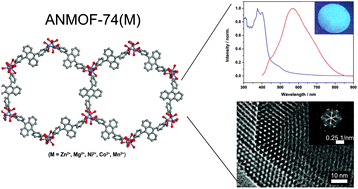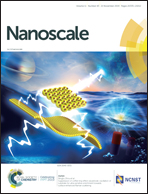A highly crystalline anthracene-based MOF-74 series featuring electrical conductivity and luminescence†
Abstract
Recently, a small group of metal–organic frameworks (MOFs) has been discovered featuring substantial charge transport properties and electrical conductivity, hence promising to broaden the scope of potential MOF applications in fields such as batteries, fuel cells and supercapacitors. In combination with light emission, electroactive MOFs are intriguing candidates for chemical sensing and optoelectronic applications. Here, we incorporated anthracene-based building blocks into the MOF-74 topology with five different divalent metal ions, that is, Zn2+, Mg2+, Ni2+, Co2+ and Mn2+, resulting in a series of highly crystalline MOFs, coined ANMOF-74(M). This series of MOFs features substantial photoluminescence, with ANMOF-74(Zn) emitting across the whole visible spectrum. The materials moreover combine this photoluminescence with high surface areas and electrical conductivity. Compared to the original MOF-74 materials constructed from 2,5-dihydroxy terephthalic acid and the same metal ions Zn2+, Mg2+, Ni2+, Co2+ and Mn2+, we observed a conductivity enhancement of up to six orders of magnitude. Our results point towards the importance of building block design and the careful choice of the embedded MOF topology for obtaining materials with desired properties such as photoluminescence and electrical conductivity.



 Please wait while we load your content...
Please wait while we load your content...